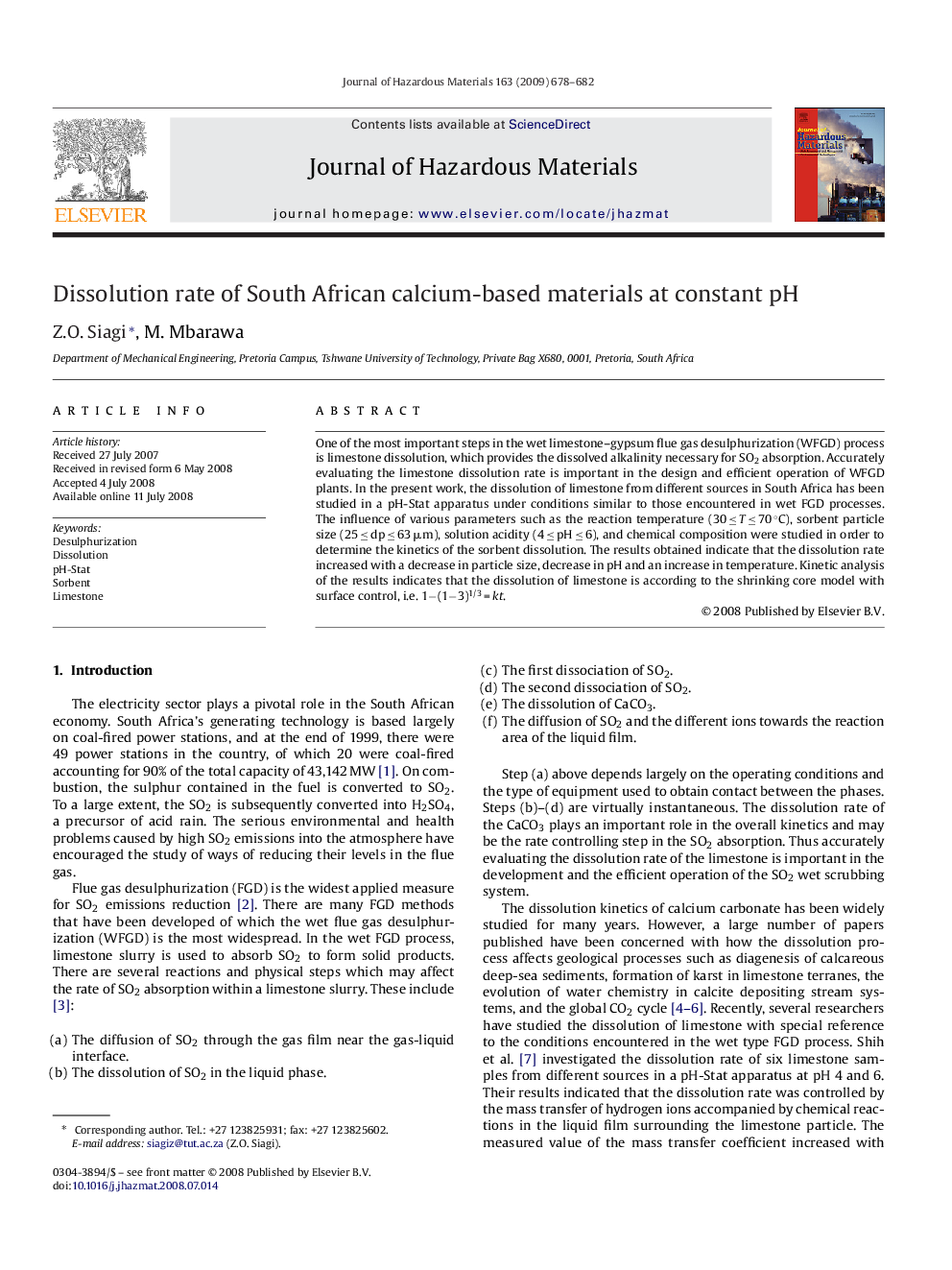| Article ID | Journal | Published Year | Pages | File Type |
|---|---|---|---|---|
| 582109 | Journal of Hazardous Materials | 2009 | 5 Pages |
Abstract
One of the most important steps in the wet limestone-gypsum flue gas desulphurization (WFGD) process is limestone dissolution, which provides the dissolved alkalinity necessary for SO2 absorption. Accurately evaluating the limestone dissolution rate is important in the design and efficient operation of WFGD plants. In the present work, the dissolution of limestone from different sources in South Africa has been studied in a pH-Stat apparatus under conditions similar to those encountered in wet FGD processes. The influence of various parameters such as the reaction temperature (30 â¤Â T â¤Â 70 °C), sorbent particle size (25 â¤Â dp â¤Â 63 μm), solution acidity (4 â¤Â pH â¤Â 6), and chemical composition were studied in order to determine the kinetics of the sorbent dissolution. The results obtained indicate that the dissolution rate increased with a decrease in particle size, decrease in pH and an increase in temperature. Kinetic analysis of the results indicates that the dissolution of limestone is according to the shrinking core model with surface control, i.e. 1â(1â3)1/3 = kt.
Related Topics
Physical Sciences and Engineering
Chemical Engineering
Chemical Health and Safety
Authors
Z.O. Siagi, M. Mbarawa,
